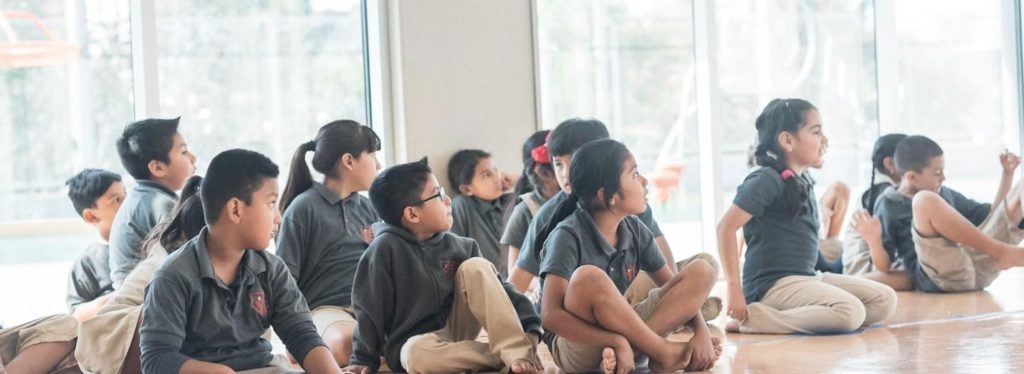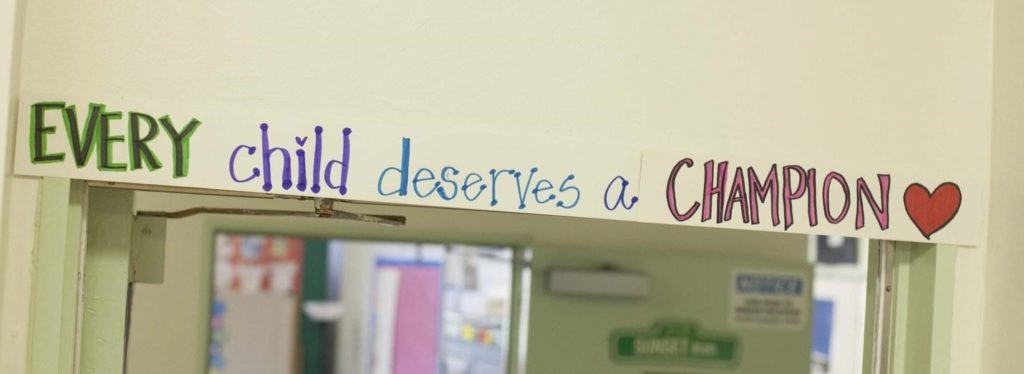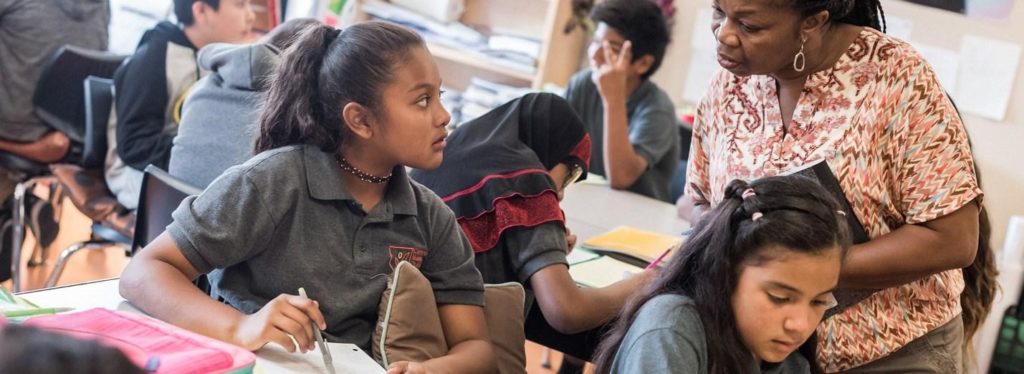Ideas in Action: Assessing Student Language and Special Education Needs Through Teamwork
Key Practice: Educators are teaming up at Camino Nuevo’s Kayne Siart campus to better assess student needs when it comes to language acquisition and special education.

Photo Credit: Camino Nuevo Charter Academy Kayne Siart Campus
“Poverty is not a learning disability – and neither is learning a language.” At Camino Nuevo’s Kayne Siart Campus in Los Angeles, nearly half of its students are learning English and 97{0e846c3784dd2068b2efb9a9ed5e09e96c66785123dba27c52dc4984ab787e44} are economically disadvantaged, but its educators look closely at each child to figure out the root causes of any challenges they face.
The school strives to reduce any over identification of students with disabilities. The school shows strong results for all its students, including those with disabilities and English learners, because they pause to comprehensively understand these kids, their strengths, and their needs.
Kayne Siart staff are making student achievement a team effort, where teachers, special education support staff, administrators, and parents talk about establishing attainable learning goals that can be measured. The approach applies data-driven decisions to targeted and flexible instructional interventions.
“Some kids [will start the school year] and the teacher will want to move them into assessment right away because they’re in first grade and not reading, or they don’t know their letter sounds yet,” said Heather McManus, the chief learning officer at Camino Nuevo Charter Academy.
“We want to be mindful of overidentifying students for special education services, particularly because of language issues,” said Ana Ponce, the chief executive officer at Camino Nuevo. “We always make sure to rule out language as the reason for whatever difficulty the student has. We get the kids academically assessed in English and in Spanish, so we can rule it out.”
“We need to address the problems at the root, rather than jumping to a special education assessment,” said McManus.
 Photo Credit: Camino Nuevo Charter Academy Kayne Siart Campus
Photo Credit: Camino Nuevo Charter Academy Kayne Siart Campus
The student success team looks at factors like the student’s schooling history as well as the amount of time they’ve been struggling academically. They also look at external factors in the child’s life that may be delaying a student from learning. Staff typically go through two cycles of student success team meetings, before making the decision to do a special education assessment.
“The team is really diving into what’s going on with this student, what’s at play, and if there is something else that’s hindering this student from learning,” said McManus. “We address that prior to doing a special education assessment,” said McManus.
Adalid Sanchez, a special education teacher, said the student success team assessments are organized in a way that they can look at the student progress and make a clear decision on whether to move on to special education or an individualized education program (IEP).

Photo Credit: Camino Nuevo Charter Academy Kayne Siart Campus
Camino Nuevo’s model of ruling out other academic and social-emotional barriers to learning before pursuing special education services takes longer, but it is based on identifying true root issues and needs for the students. The school feels like the atypical time investment pays off.
A three-year analysis of California’s Academic Performance Index (API) growth scores showed that students with disabilities at Camino Nuevo’s Kayne Siart Campus outperform their peers in Los Angeles and in the state of California. (View more here)
“There’s the idea of overidentifying, and not giving the kids just time to catch up,” said Sanchez
